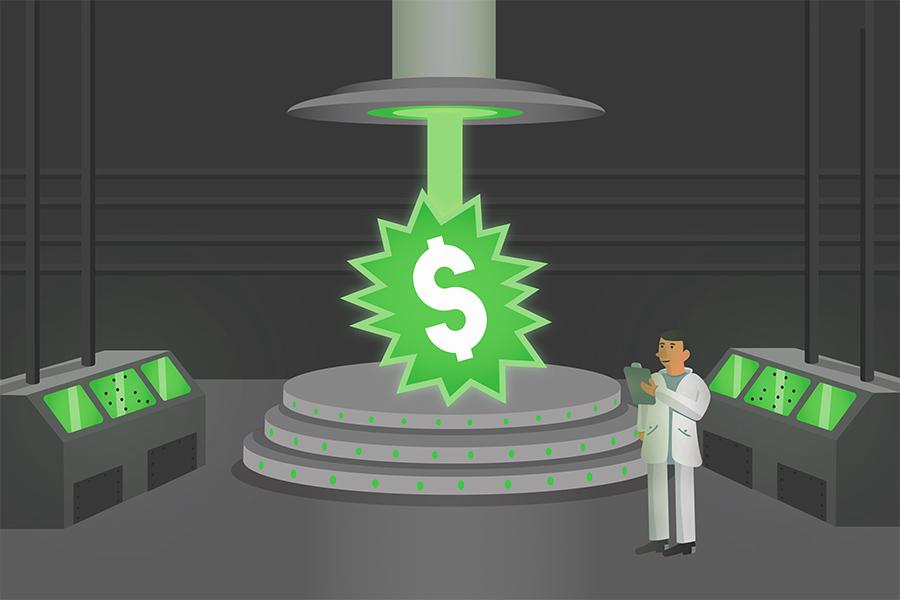Why Did Voters Oppose Prop Y?
Published: September 23, 2015
When Prop Y was first placed on the ballot in August, it was, itself, new. A tax levy, though, was not. Over the past year, FHSD hired consultants from Patron Insight to measure community support of a proposed tax levy before the measure was introduced officially. Most expected the proposition to come onto the ballot in April. However, the results of the polls conducted by these consultants, while favorable, came in too late to place Prop Y on the April ballot according to Superintendent Pam Sloan.
“Their polling sample was very small,” Steve Johnson, an FHSD community member who organized a campaign against Prop Y, said. “There were approximately 400 people. It was going to be very close according to the poll and I don’t believe they asked the right people, obviously, since there were 10,000 people who showed up and voted no.”
The April ballot is generally full of measures from a variety of organizations and government entities, and so these groups share the costs of fronting an election and distributing the ballots. If FHSD had placed Prop Y on the ballot in April, it would have cost them about $500. However, by waiting for August, the school district ran into two major issues. First of all, summer votes are generally populated by those who vote all the time, which are older people with less vested interest in FHSD and a fixed income, meaning they were less likely to be able to afford the 90 cent tax increase. Additionally, the August ballot left the entire cost of the election on the shoulders of FHSD, costing them almost a quarter of a million dollars more than an April vote would have. According to superintendent Pam Sloan, it would not have been possible to place Prop Y on the April ballot, but there was little to no discussion on the issue of the cost of the election.
“They knew that this was coming,” social studies teacher Sean Fowler said. “They spent a whole year studying it, they paid for consultants who consulted them to put it as 90 cents in August, which is a very suspect decision. If you understand politics at all it seems like the worst possible time. They talked about this for over a year, they saw this coming but there was no, from what I understand, public discussion about it. It just seems either ill-conceived or intentionally deceptive.”
Still others had issues with the idea of a tax levy in the first place. FHSD awarded teachers raises just a few years ago, while knowing they needed deficit spending and would likely not be able to afford the raises in the long term. Since the board waited so long to post a ballot issue, many voters were hesitant when the board asked for money.
“We had projections that told us where our finances were going,” board member Sandra Ferguson said. “We were told, ‘Don’t wait til you’ve done all this other stuff to put a ballot issue on. Put the ballot issue on first and then go forward with the higher issues, like teacher salary,’ an idea I think the public and the patrons of this district would support. But we did it backwards.”
According to school board member Rene Cope, the biggest reason Prop Y did not pass was because of efforts mounted by community members like Steve Johnson, who tried to convince voters to vote no on Y. Cope, along with other board members, and supportive voters attempted to demonstrate to the community what the risks of not passing Prop Y would be, only to be met with, Cope said, accusations of the use of scare tactics and shock factor.
“Communication was our biggest issue, getting a strong positive story out,” Cope said. “Our goal was to strongly communicate to the community how wonderful our schools are, and how we’ve had decreased income and therefore a need for the tax increase. We soon discovered that one of the challenges we were facing that people didn’t understand this was actually going to mean cuts. They didn’t get that we were trying to avoid cuts.”
Many community members simply didn’t support a 90 cent tax increase, or didn’t understand why such a large increase was necessary.
“I think the amount was too large to not be better explained and I think the insufficient explanation to support the 17 percent increase just didn’t go over well,” Richard Taylor, who spoke at the Sept. 3 board meeting, said. “I think they’ve proven that they can, well , perhaps not as well as they want, but they’ve proven they can live on about half that tax increase. I talked to about a couple hundred people who have told me they would have voted for a 45 or 50 cent levy increase. Nobody explained to them why 90 cents was needed so they voted no.”
Overall, there was no one cause behind the failure of Prop Y. Most had their own reasons for voting the way they did.
“This is a tough situation and I understand why people were on both sides,” Fowler said. “I understand why people were against the tax hike, especially because of the size of it and the manner that it was done is questionable. At the same time, we as a community, need to realize that this district has done a very good job of teaching their student and you don’t want to lose your best teacher. It’s an issue with no easy answer.”









![FHN's Rescheduled Prom At Old Hickory Country Club [Photo Gallery]](https://FHNtoday.com/wp-content/uploads/2025/04/IMG_9932-48-300x200.jpg)
![Varsity Boys Volleyball Fall Short Against FHC [Photo Gallery]](https://FHNtoday.com/wp-content/uploads/2025/03/IMG_0453-300x200.jpg)
![Girls Varsity Soccer Falls to Liberty High School [Photo Gallery]](https://FHNtoday.com/wp-content/uploads/2025/04/03.27_GirlsSoccer_JDelapaz-15-300x200.jpg)


